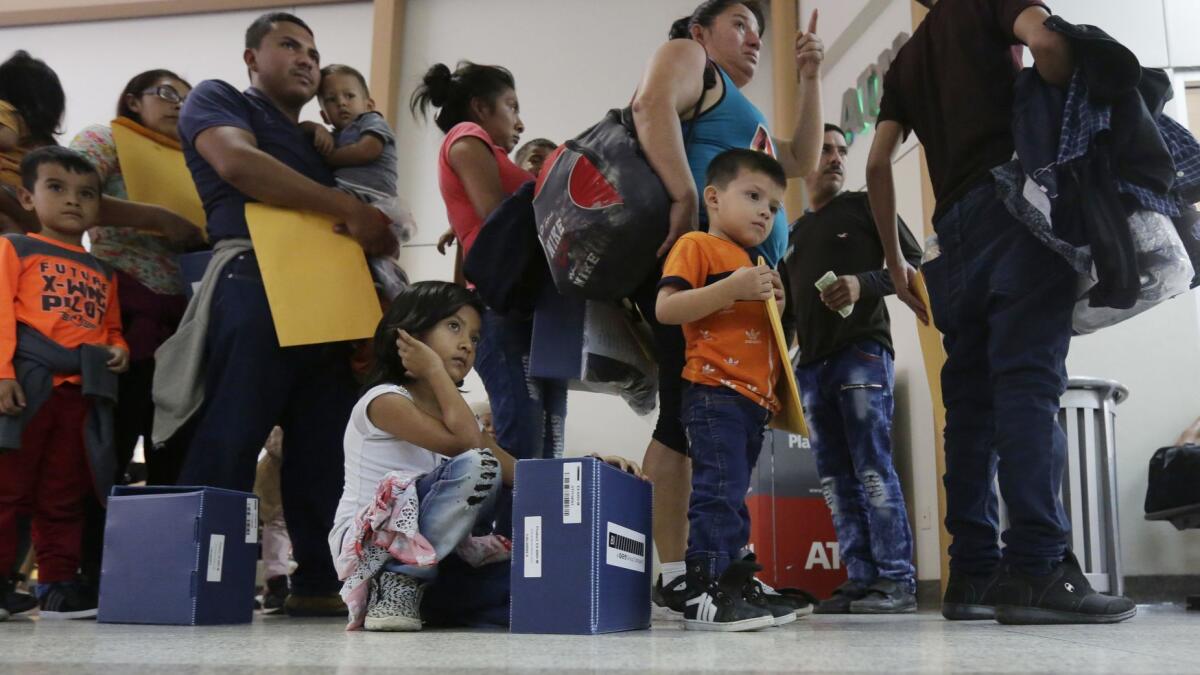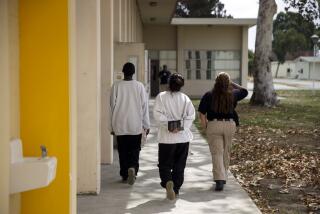Trump administration tells judge it has authority to keep immigrant families in long-term detention

- Share via
Rather than continue to separate children from parents apprehended crossing the border illegally, the Trump administration wants to hold the families together, indefinitely, in detention centers, Justice Department lawyers told a federal court Friday.
In papers filed Friday evening, the Justice Department told U.S. District Judge Dolly Gee in Los Angeles that they believe a decades-old court case that she has supervised gives them the authority to carry out the detention plan.
“The government will not separate families but detain families together during the pendency of immigration proceedings when they are apprehended at or between ports of entry,” the Justice Department said.
The lawyers wrote they were looking to “explain” to Gee how the government planned to adhere to an order issued earlier this week by another federal judge in San Diego, while not running afoul of a long-standing settlement agreement in the case Gee oversees.
In the San Diego ruling, U.S. District Judge Dana M. Sabraw ordered an immediate halt to the practice by immigration authorities of taking children from their parents. Sabraw was unswayed by the government’s claim it needed to separate families in order to criminally prosecute adults for coming into the country illegally.
The judge gave immigration officials 14 days to reunite children under 5 years old with their parents and 30 days to reconnect older kids with their families. In all, the government says more than 2,000 children who were taken from their parents since May remain in government custody.
For the government, complying with Sabraw’s order, however, is complicated by the Flores settlement, a 20-year-old legal agreement named after a Salvadoran teenager who was caught trying to cross into the country illegally and sued the government over the conditions she encountered while in custody. After years of legal wrangling, the Clinton administration settled the case in 1997 with a sweeping agreement that set rules for how the government can deal with immigrant children in its custody.
The settlement requires immigration officials to release children to relatives or other custodians “without unnecessary delay.” Before Friday’s filing, the Trump administration had argued that requirement conflicted with the order issued in San Diego since the administration does not want to release any adults who crossed the border illegally while their asylum claims wind their way through immigration courts.
Until recently, the government released people with pending claims for asylum under supervision, allowing them to live in the U.S. until their asylum hearing. Trump has rejected that, calling it “catch and release.”
In the filing Friday, Justice Department officials took a new legal tack, arguing that the wording “without unnecessary delay” in the Flores settlement in fact opened the door for the government to detain families together. Sabraw’s order to keep families together, they wrote , “makes delay necessary in these circumstances” and so permits keeping children in detention with their parents indefinitely.
Despite the claim that they had legal authority to detain families, in the filing the government reiterated a request it made to Gee last week that the judge modify the Flores settlement in order to give the government more flexibility as it carries out its hard-line immigration policies at the border.
Follow @joelrubin on Twitter
More to Read
Sign up for Essential California
The most important California stories and recommendations in your inbox every morning.
You may occasionally receive promotional content from the Los Angeles Times.











